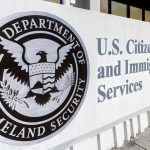How Proposed Immigration Reform Will Make a Move to the US More Difficult
With the last major overhaul to the immigration system completed in the 1960s, there are many who believe that significant reform is needed to meet the challenges of the future. Today, with over 34 million legal immigrants in the United States, most leading productive lives, we must fairly address the many others waiting for their opportunity to participate in American society.
Our immigration policies have always had a focus on family reunification, safety, and improved opportunities. However, in recent years, the conversation has shifted as the needs have changed to address refugees fleeing war and oppression, terrorism, and illegal immigrants.
What’s Being Proposed?
In May 2019, the current administration released its proposed immigration reform plan that would greatly shift the makeup of immigrants moving into the country and limit our ability to meet the humanitarian needs that have been our focus in the past. Additionally, these proposed immigration changes could greatly impact people already here, but on temporary status.
While the proposed plan would keep legal immigration at a steady pace of 1.1 million people a year, the makeup would change drastically. These proposals would significantly reduce the predominant family-based immigration (or chain migration) component, currently two-thirds of the total. Instead, a points-based system would be instituted that rewards highly skilled workers much like the systems used in Canada, Australia, and Great Britain.
How Will it Make Immigration More Difficult?
To meet the threshold established at 1.1 million entrants, while creating a new category of merit or points-based candidates that will number almost 60%, candidates must qualify based on three criteria.
They must be: 1) highly skilled, 2) with a job offer in hand, and 3) able to speak English. According to the proposed plan, these people will be able to move with their immediate families, excluding parents.
Manufacturing this shift will require limiting other potential candidates by making it more difficult to immigrate to the US. These are some of the proposed changes currently being discussed:
- Family-sponsored immigration (now the largest component at 66%) would be reduced to less than one-third of the total and would be limited to immediate family only. Extended family members would no longer be eligible.
- Applicants would be disqualified if it was determined that they would require support through Medicaid, the Supplemental Nutrition Assistance Program (formerly called food stamps), or other public assistance.
- Applicants would be required to pass a civics test before entering the country. This is currently part of the naturalization process that someone goes through when becoming a citizen. Creating further exclusion, it’s also being proposed that people prove they are English-speaking before entry. These two requirements would effectively disqualify the vast majority of applicants.
- The administration is proposing paid fees to enter the country (which may prove to be exorbitant for people fleeing war or famine, etc.). These fees would be used to fund further construction of the wall on the southern border and to fund the agencies tasked with its enforcement.
- Deferred Action for Childhood Arrivals (DACA) recipients’ futures is currently resting with the US Supreme Court. A decision is expected in June 2020. Depending on the outcome, Dreamers could be at risk of deportation and having their extensions disallowed.
- Temporary Protected Status (TPS) recipients from countries designated as dangerous (due to war or natural disasters) are at risk of not being allowed to stay in the US. Some, such as Hondurans and El Salvadorans, have already lost their protected status and have only months to find different statuses or be returned to their home countries where they face uncertain futures.
- The proposals further reduce refugees claiming asylum through the Refugee Resettlement Program instituted for people fleeing persecution, political crises, or war. In 2019, there was a 30K cap (22% of the total). In 2020, it is being reduced further to only 18K (10%).
- Elimination of the US diversity visa program (popularly known as the visa lottery) that was instituted in 1995 as a way to diversify the immigrant population by awarding visas to underrepresented countries.
- Eliminate the EB-5 program for immigrants who are investing $1M in American businesses and creating 10+ jobs. Long criticized as “selling” visas to wealthy business people, this visa would be stopped as part of the ongoing immigration program.
Without a doubt, immigration is an emotional issue for everyone. It can have devastating consequences for people when laws are drastically altered. Careful thought and cooler heads need to prevail as these proposals are evaluated and enacted.
Proposed immigration reform should mirror our national values. Contact Smith Alston Darner and Lee to discuss your questions and concerns about how these proposed changes may impact you or a family member.




